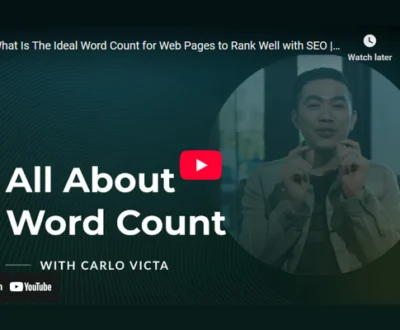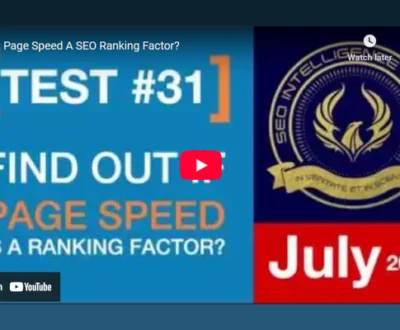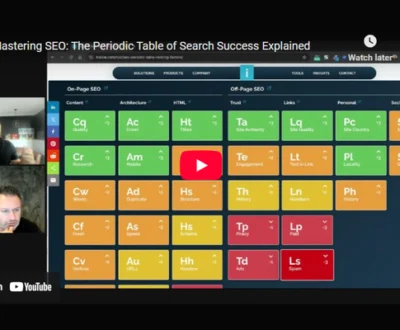When crafting SEO page titles, I aim to keep them concise—between 50 and 60 characters—to avoid being cut off in search results. I place the most important keywords near the start to match user intent and enhance relevance. Using clear, engaging language helps maintain readability without keyword stuffing, and I separate elements with hyphens or pipes for clarity. Applying title case adds professionalism, and including numbers or power words boosts clicks. Let me explain how these tips improve your page’s visibility and appeal.
- Key Takeaways
- Understanding the Importance of SEO Page Titles
- Best Practices for Title Length and Structure
- How to Effectively Place Keywords in Titles
- Balancing Readability and SEO in Titles
- Using Title Case for Consistency and Clarity
- Avoiding Keyword Stuffing in Page Titles
- Enhancing Titles With Numbers and Power Words
- Choosing the Right Separators for Titles
- Testing Title Appearance Across Devices
- Strategies to Boost Click-Through Rates With Titles
- Frequently Asked Questions
- Final Thoughts
Key Takeaways
- Start SEO page titles with the most important keywords to improve visibility and relevance in search results.
- Keep titles between 50-60 characters to avoid truncation and maintain clarity across devices.
- Use pipes or hyphens to separate title elements for better readability and structure.
- Balance keyword inclusion with natural phrasing to prevent keyword stuffing and enhance user engagement.
- Capitalize main words and lowercase short connectives for a professional, consistent appearance following style guides.
Understanding the Importance of SEO Page Titles
Although SEO page titles might seem like a small detail, they play an important role in how search engines interpret and rank your content. The title significance lies in its ability to act as a concise summary, giving both search engines and users a clear idea of the page’s topic.
Proper title optimization improves the page’s relevance for specific search queries, enhancing visibility in search results. Including the right keywords in your title helps search engines understand the context, which can boost your page rankings.
Additionally, a well-crafted title can increase click-through rates, drawing more visitors to your site. It’s also important to make sure the title aligns with the page content, as this consistency supports search engine algorithms in evaluating relevance.
If a title tag is missing or ignored, search engines may rely on other elements like the H1 tag. Overall, understanding title significance and optimization is vital for effective SEO strategies. Research shows that title tags between 15-40 characters yield an 8.6% higher click-through rate, highlighting the importance of concise titles.
Best Practices for Title Length and Structure
When crafting SEO page titles, it’s important to keep the character count around 60-70 to guarantee clarity and avoid truncation in search results.
Placing the most relevant words near the beginning helps search engines and users quickly grasp the topic.
Balancing clear language with engaging phrasing will make your titles both informative and appealing.
Regularly optimizing titles after publication based on performance data can significantly increase traffic by improving click-through rates.
Optimal Character Count
Getting your page titles within the ideal character count is crucial for effective SEO and user experience. Titles should be between 50 and 60 characters, but since character width varies, measuring by pixel width (around 575-580 pixels) is more precise. Keeping titles at least 30 characters prevents Google from substituting headings instead. Mobile devices allow slightly longer titles, but desktop limits remain the best baseline.
Here’s a quick overview:
| Aspect | Recommendation |
|---|---|
| Character Length | 50–60 characters |
| Pixel Measurement | 575–580 pixels |
| Minimum Length | 30 characters |
Following these helps guarantee your titles display fully, maintain clarity, and improve search rankings without being cut off or rewritten.
Word Order Importance
A well-ordered page title plays an essential role in both SEO performance and user engagement.
Keyword positioning matters most when crafting title variations, as placing primary keywords at the beginning notably boosts search rankings and attracts clicks. This strategy aligns your title with user search queries, improving relevance and visibility.
When including multiple keywords, prioritize them carefully to maintain clarity and focus. Here are key points to keep in mind:
- Start titles with the most important keyword for better SEO impact
- Use exact keyword phrases to match search intent
- Structure titles clearly to reflect page content
- Avoid filler words that dilute keyword strength
- Experiment with title variations to find the best performing order
Balancing Clarity and Engagement
Although crafting SEO-friendly page titles requires careful keyword placement, balancing clarity and engagement proves equally important for maximizing impact. Using clarity metrics helps guarantee titles remain concise and understandable, while engagement strategies increase click-through rates without sacrificing keyword relevance. To achieve this balance, I focus on title length and structure that fit typical display limits, avoiding truncation.
| Aspect | Best Practice |
|---|---|
| Clarity Metrics | Keep titles within 50-60 characters |
| Engagement Strategies | Use actionable words and numbers |
| Keyword Placement | Position keywords early for visibility |
| Structure | Separate elements with pipes or hyphens |
Following these guidelines improves readability and user interest, helping your page perform better in search results.
How to Effectively Place Keywords in Titles
When you place keywords effectively in your page titles, you greatly improve how search engines interpret your content and how users perceive its relevance. Proper keyword placement signals semantic relevance, helping search engines match your page to user queries.
I recommend focusing on keyword density, ensuring you use your main keyword once, near the beginning of the title, to maximize SEO impact without overstuffing.
Here’s how I approach keyword placement in titles:
- Put the primary keyword close to the start of the title tag.
- Use keyword variations or synonyms to broaden reach naturally.
- Keep the title clear and concise, accurately reflecting page content.
- Avoid repeating keywords to prevent keyword stuffing penalties.
- Align keyword use with user intent for better engagement and click-through rates.
Following these tips helps balance SEO needs with readability, making your titles both search-friendly and user-focused.
Balancing Readability and SEO in Titles
Since effective page titles must serve both search engines and users, balancing readability and SEO is vital. One key factor is managing title length—keeping it under 60 characters guarantees your title won’t get cut off in search results, preserving clarity for readers.
At the same time, keyword density plays a significant role; it’s important to include relevant keywords naturally without stuffing them, which can disrupt the flow and reduce reader engagement.
To achieve this balance, I focus on using action words, numbers, and clear phrasing that reflects the content’s value. Adding context, like brackets, can also enhance clarity and attract clicks.
Titles should feel inviting and easy to read, aligning with user intent while still optimized for search engines. By combining concise language with strategic keyword placement, I create titles that perform well in search rankings and encourage users to engage, striking the right harmony between SEO and readability.
Using Title Case for Consistency and Clarity
Using title case means capitalizing the main words in your page titles, which helps create a consistent and professional look across your site.
This consistency not only improves readability but also reinforces your brand’s identity, making it easier for visitors to navigate and trust your content.
Following clear title case rules guarantees your titles stand out clearly on any device, enhancing both user experience and SEO performance.
Title Case Rules
Title case plays an essential role in creating clear and consistent page titles that enhance both readability and professionalism. When applying title case, I focus on capitalizing principal words while leaving short connectives like “and” or “for” in lowercase, unless they start the title. This approach highlights important words and improves clarity, a key title case advantage.
Consistent title case applications also help maintain a polished, recognizable brand image.
Here are essential title case rules I follow:
- Capitalize main words, avoid over-capitalizing every word
- Lowercase short connectives unless first in the title
- Adhere to recognized style guides like APA or Chicago
- Keep titles concise to prevent truncation in search results
- Focus on clarity, avoiding keyword stuffing
These rules guarantee titles look professional and help improve SEO performance.
Benefits of Consistency
Maintaining consistency in page titles plays a significant role in shaping how users and search engines perceive a website. When you use title case uniformly, it enhances brand visibility by creating a recognizable and professional appearance across all pages.
This consistency builds user trust, as clear and predictable titles help visitors understand your site’s content quickly. Search engines also benefit from consistent formatting, which improves their ability to interpret your content hierarchy, potentially boosting your SEO rankings.
Additionally, consistent titles make navigation easier, encouraging deeper user engagement. By avoiding all caps and keyword overload while sticking to a clear format, you reinforce your brand’s identity and professionalism.
Avoiding Keyword Stuffing in Page Titles
Although it might seem tempting to pack page titles with numerous keywords, this practice often backfires by reducing readability and triggering search engine penalties. Maintaining an appropriate keyword density is vital to keep titles natural and user-friendly.
Instead of stuffing keywords, I focus on semantic relevance, selecting terms that truly reflect the content. This approach helps search engines understand the page while improving user experience.
Here are key tips to avoid keyword stuffing in your page titles:
- Limit keywords to one primary and one or two secondary terms
- Guarantee keywords fit contextually within the title’s natural flow
- Avoid repetitive or forced keyword usage that disrupts readability
- Use synonyms or related phrases to diversify keyword presence
- Prioritize clarity and user intent over trying to include as many keywords as possible
Enhancing Titles With Numbers and Power Words
I’ve found that including numbers in your page titles can greatly increase click-through rates because they offer clear, structured information upfront.
Pairing these numbers with carefully chosen power words boosts engagement even further by making titles more compelling and memorable.
Together, these elements create titles that not only attract attention but also align well with user intent and SEO best practices.
Impact of Numbers
Numbers have a powerful impact when included in page titles, as they grab attention and communicate clear, quantifiable information. Understanding the number significance helps improve click-through rates because users recognize specific value at a glance.
The numerical impact is evident in how titles with numbers often perform better in search results by aligning with searcher intent and providing measurable insights. To leverage this effectively, consider these points:
- Use precise numbers to enhance transparency and set clear expectations.
- Position numbers centrally for better visibility within the title.
- Keep titles between 40 to 60 characters to optimize display and engagement.
- Combine numbers with relevant keywords to boost search ranking.
- Tailor titles for thematic or list-based content to resonate with users.
These strategies highlight the importance of numbers in crafting effective SEO page titles.
Using Power Words
When crafting SEO page titles, using power words alongside numbers greatly enhances their effectiveness by capturing attention and communicating value quickly.
Power word examples like “Limited Time,” “Exclusive,” and “Best” act as emotional triggers that motivate users to click by appealing to urgency, uniqueness, or quality. Positioning these words near the start of a title maximizes their impact in search results.
Combining power words with targeted keywords makes titles both relevant and compelling, increasing click-through rates. However, it’s important to balance strong emotional triggers with clarity to maintain credibility and readability.
Avoiding overused or cliché terms helps keep titles fresh and appealing. By integrating carefully chosen power words with numbers, you can create SEO titles that stand out and effectively engage your audience.
Boosting Title Engagement
Although power words capture attention effectively, combining them with numbers in SEO titles can greatly boost engagement by providing clear, quantifiable value.
Number psychology plays a key role here, as numbers signal structure and trustworthiness, enhancing title aesthetics and user appeal.
When crafting titles, I focus on these best practices:
- Front-load numbers to improve immediate recognition
- Use odd numbers for authenticity and memorability
- Match numbers to content intent to meet user expectations
- Avoid overusing numbers to maintain clarity and impact
- Keep formatting consistent, using numerals instead of spelling out numbers
This approach not only improves click-through rates by up to 36% but also makes titles easier to scan and more credible.
Combining power words with numbers creates compelling, efficient titles that stand out in search results.
Choosing the Right Separators for Titles
Choosing the right separators for SEO page titles plays an essential role in both readability and search engine understanding. When it comes to separator selection, pipes (|), hyphens (-), and colons (:) are common practices because they offer clear visual cues that enhance keyword clarity. Pipes save space, which helps when title length is limited, while hyphens create natural breaks that improve scanning. Colons effectively separate main keywords from additional details without clutter. Consistency in using one or two types of separators across your titles boosts separator effectiveness and maintains a professional look. This consistency supports user engagement by making titles easier to read and comprehend quickly. Overusing separators or mixing too many types can harm readability impact and confuse both users and search engines. Ultimately, carefully chosen and consistently applied separators improve how your titles communicate important information, helping both users and search engines understand your content better.
Testing Title Appearance Across Devices
How do SEO page titles appear across different devices, and why does it matter?
Device variations can greatly affect how your titles show up in search results. Google may truncate titles differently or even replace them based on the device, especially on mobile. This makes title testing essential to guarantee your SEO efforts remain effective across platforms.
To manage these variations, I recommend:
- Using tools like mobile simulators to preview titles on various devices
- Regularly spot-checking search results on both desktop and mobile
- Monitoring Google Search Console for title display insights and click-through rates
- Conducting SEO audits to align titles with page content and brand consistency
- Keeping titles concise and within pixel limits to reduce truncation or overrides
Strategies to Boost Click-Through Rates With Titles
What makes a page title truly effective in boosting click-through rates? It’s a mix of using clickable phrases, emotional triggers, and clear keywords that match user intent. Action words like “discover” or “transform” create urgency, while emotional triggers such as curiosity or FOMO encourage clicks. Keeping titles concise, ideally 50-60 characters, guarantees they aren’t cut off on search pages. Here’s a quick breakdown:
| Strategy | Key Element | Benefit |
|---|---|---|
| Use Action Words | Discover, Achieve | Creates urgency and interest |
| Place Keywords Early | Primary keywords | Enhances relevance |
| Emotional Triggers | Curiosity, FOMO | Motivates clicks |
| Optimize Length | 50-60 characters | Prevents truncation |
Frequently Asked Questions
How Often Should I Update My SEO Page Titles for Best Results?
I follow frequency guidelines by rejuvenating my SEO page titles every 3 to 6 months. This title rejuvenation keeps my content relevant, improves rankings, and aligns with strategic updates without confusing search engines or users.
Can Page Titles Impact Voice Search Optimization?
I believe properly placed keywords in page titles boost voice search visibility. Title optimization truly transforms how voice assistants interpret content, making your site more searchable and user-friendly through strategic, succinct, and smart phrasing.
Should Brand Names Be Included in Every SEO Page Title?
I think including your brand name in every SEO page title depends on your goals. Brand name importance boosts recognition, but for title optimization, balancing keywords and relevance often matters more than always adding the brand name.
How Do SEO Titles Differ for E-Commerce Product Pages?
I once thought e-commerce keywords didn’t matter much, but I’ve learned SEO titles for product pages need precise product details upfront to boost product visibility and attract clicks, unlike broader, brand-focused titles.
What Tools Can Help Analyze the Effectiveness of Page Titles?
I use tools like AIOSEO and SEO Review Tools for title optimization and keyword analysis. They help me score titles, preview search results, and refine keywords to boost effectiveness and improve click-through rates.
Final Thoughts
Mastering SEO page titles isn’t just helpful—it can feel like revealing a secret code to online success. By carefully balancing keyword placement, length, and readability, you verify your titles stand out without sacrificing clarity. Using title case, power words, and proper separators fine-tunes your message further. Remember, testing across devices assures your efforts pay off everywhere. With these strategies, you’re not just optimizing—you’re commanding attention and boosting your click-through rates effectively.
Windee Tan is a seasoned SEO Specialist with over a decade of experience helping businesses grow their organic visibility through data-driven strategies. He specializes in technical SEO, content optimization, and local search, with deep knowledge of tools like GA4, GSC, SEMrush, and Screaming Frog. Windee is passionate about translating complex SEO insights into practical tactics that drive real-world results. When he's not auditing sites or crafting keyword strategies, he’s exploring the latest trends in AI, digital marketing, and productivity.
About this blog
We are a digital marketing company with a focus on helping our customers achieve great results across several key areas.
Request a free quote
We offer professional SEO services that help websites increase their organic search score drastically in order to compete for the highest rankings even when it comes to highly competitive keywords.
Subscribe to our newsletter!
More from our blog
See all postsRecent Posts
- Writing Clear Calls to Action That Boost On-Page SEO 21 August 2025
- Why Word Count Still Matters in On-Page SEO Today 20 August 2025
- Why Site Speed Is Critical for On-Page SEO Success 19 August 2025









